Both white and pink ginger are edible types of ginger. The plants can also be grown for ornamental purposes. Surprisingly, the pink ginger you find in the supermarket or with your sushi is likely very similar to white ginger.
Pink Ginger vs. White Ginger
White ginger is the most common type of ginger grown as a spice. Pink ginger does exist as an ornamental plant, but it’s not commonly eaten. The pink tint of pickled ginger typically comes from young plants, or added color.
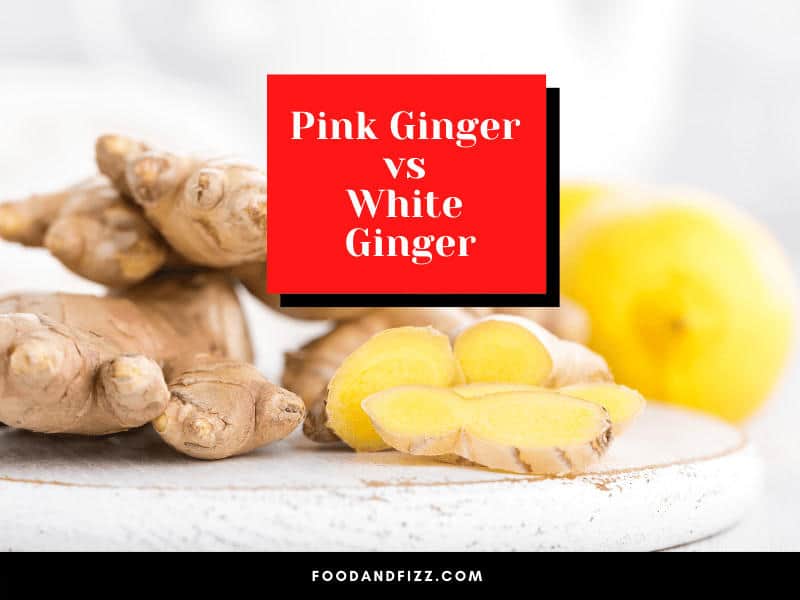
Uses for White and Pink Ginger
White and pink ginger often have different uses. Both can be pickled, but pickled ginger is more often pink. Pink ginger is typically used for pickling.
Ginger as a Spice
White ginger is used as a spice, particularly in Asian cooking. It can be fresh. More commonly, it is dried, ground, and powdered. It takes on a brown color after it’s dried. Fresh ginger can be grated or sliced.
Ginger, particularly ground ginger, is used in a wide variety of dishes. Stir fries, curries, gingerbread, and soups are a few dishes that often call for ginger.
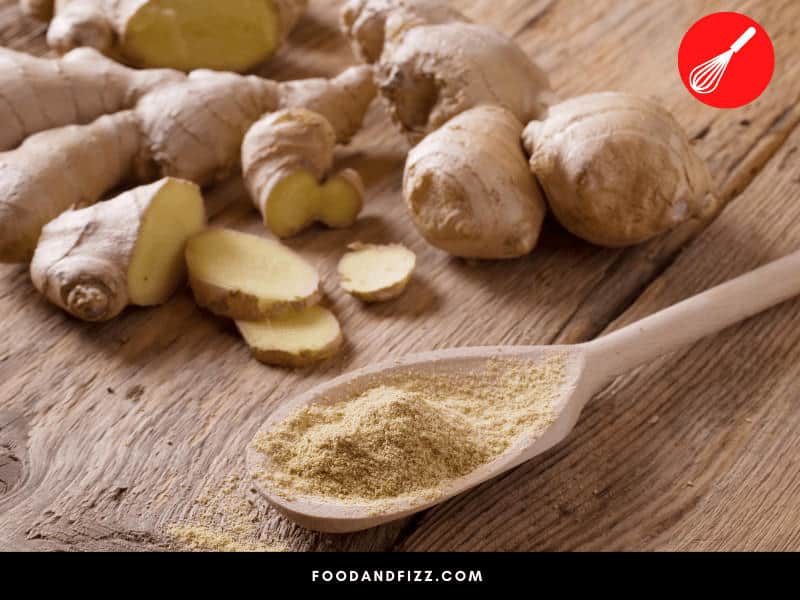
Ginger as Medicine
White ginger is used medicinally in traditional Eastern medicine. It’s been used for colds, nausea, arthritis, migraines, and hypertension for thousands of years.
Recent research has determined it is effective for these uses. In America, it’s popular as a home remedy for upset stomach and nausea.
Ginger Tea
Ginger is also popular as ginger tea. This can be drunk to get the medicinal benefits of ginger, or simply to enjoy the flavor. Ginger tea can be made from sliced fresh ginger or dried ginger.
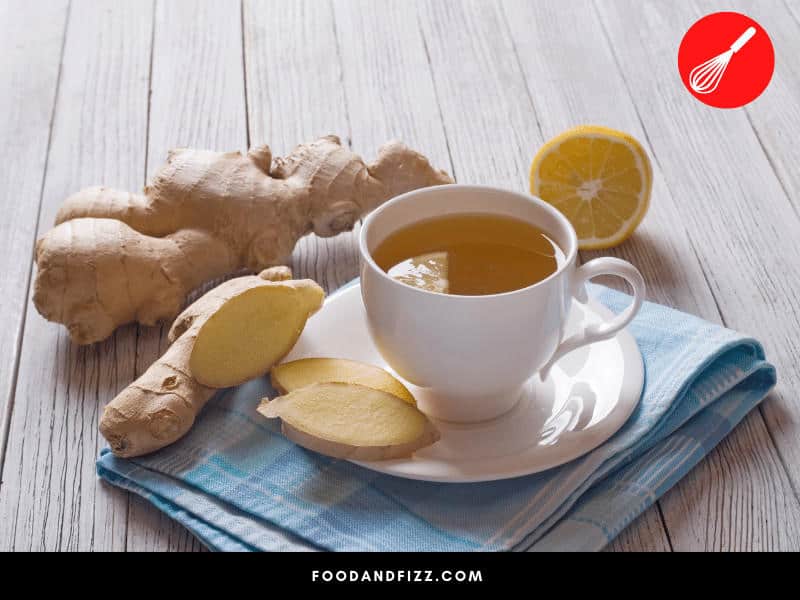
White Ginger Plant vs. Pink Ginger Plant
White ginger is the type of ginger that is typically used for culinary purposes. In the supermarket, you’ll find large roots of white ginger. It is used in traditional medicine and home remedies, as well as a cooking spice.
Pink ginger, and it’s close relative, red ginger, don’t get their name from the color of their roots. Instead, their respective tittles come from their flowers.
These types of ginger are grown for ornamental purposes. They are edible, but are rarely used for cooking or eating.
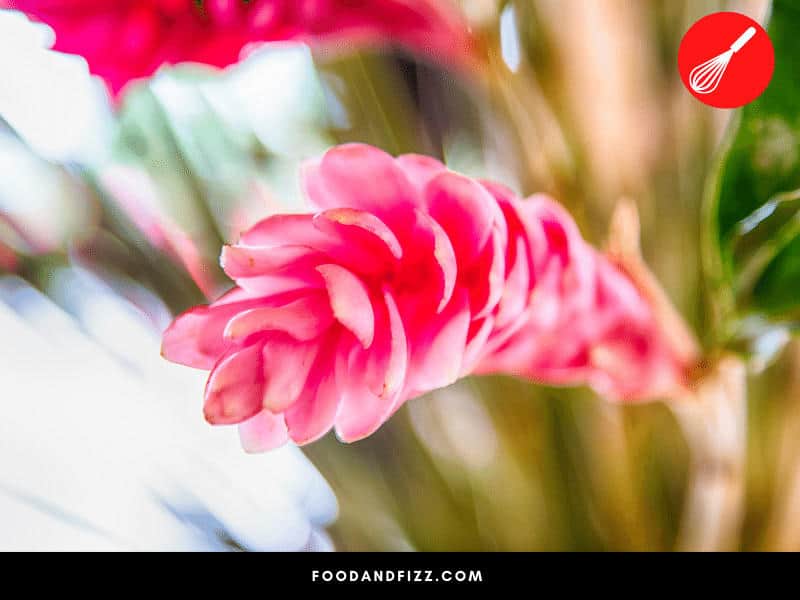
White Pickled Ginger vs. Pink Pickled Ginger
White pickled ginger and pink pickled ginger are actually made from the same plant. However, there are some key differences between the two.
Age
White ginger has a pink hue when it’s young. It has a mild flavor as well. The young root is very tender, and perfect for thin slicing. These factors make it an excellent choice for pickled ginger.
Pickling Process
Pickled ginger’s pink hue is partly due to the pickling process. Anthocyanins give many foods a pink or purple hue. These include blueberries, eggplant, and black rice.
Ginger also has anthocyanin, although in smaller amounts. The pickling process enhances the effect, making the pink color stronger. This effect is only temporary, however. Eventually, the pink color will fade, and the pickled ginger will become light pink or white.
Young ginger contains a much higher amount of anthocyanins than mature ginger, which is why young ginger has a pink hue.
Added Color
Since the pink color of pickled ginger often fades over time, color is often added. The common additives are beet juice and food dye E124 or E122.
Traditionally, pink sushi was dyed with red perilla, or shiso, leaves. They affect the taste of pink ginger slightly. They have notes of cinnamon, mint, and citrus. This gives traditional pink ginger a slightly more complex flavor than types made from other methods.
Why Pink Pickled Ginger?
Since pink ginger is at best a partially natural occurrence, and also the result of humans adding dyes, it raises a question. Why turn the ginger pink? This is done for a few reasons.
Sushi Culture
One reason for pink ginger’s popularity is sushi culture. In sushi culture, presentation is extremely important. In fact, it’s truly an aspect of Japanese culture, which sushi originates from.
Japanese culture values excellence, as well as attention to detail. When it comes to sushi, every detail matters. Each flavor is critical, as is the presentation.
Even gas station sushi is often provided with pink ginger and nestled in attractive fake grass. This is a nod to sushi’s origins. No matter the quality of sushi, some concern for presentation is involved.
Gari is the term for sushi ginger, which is simply pickled ginger. It can be either white or pink, but pink is often preferred. Pink ginger adds a splash of color, and compliments the colors often present in the sushi itself.
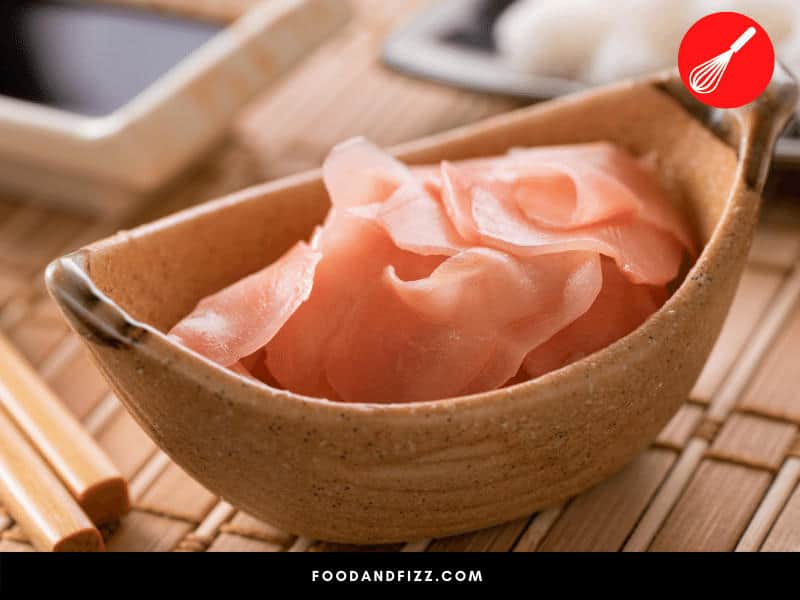
Sign of Quality
The pink hue of pink ginger is seen as a sign of quality, even though this isn’t necessarily the case. Ginger that is naturally pink has a few things going for it.
It is made from young ginger, which is naturally tender and mild. This makes it preferable for pickling and serving with sushi. The other aspect is freshness. Naturally pink ginger is relatively fresh, because it loses it’s pink hue over time.
These qualities cause people to prefer pink ginger. Of course, if the ginger is pink because of added color, it’s possible that it’s neither young nor fresh. Still, the perception remains.
Final Thoughts on Pink Ginger vs White Ginger
Which type of ginger is better depends on your purpose. If you are using ginger as a spice, white ginger is preferable. If you are using it as an accompaniment to sushi, pink ginger is better. It is more tender and has a milder flavor than white ginger.
Frequently Asked Questions to Pink Ginger vs White Ginger
Does Sushi Ginger Need to be Refrigerated?
Sushi ginger, whether white or pink, should be refrigerated after opening. Storing pickled ginger can be compared to storing pickles. Both are pickled. Before opening, they can be kept in a cool dark location. After opening, it’s best to refrigerate them to maintain freshness.
Is Pink Ginger Good for the Stomach?
Pickled ginger is great for your gut. The fermentation process produces probiotics, which are good bacteria that exist in your stomach. Consuming foods with probiotics can boost your own good bacteria.
Can You Eat too Much Ginger?
You can eat too much ginger. Ginger’s strong flavor makes it unlikely you will over consume it. However, it is possible. More than 5 grams of ginger a day increases the potential negative effects, including gas, heartburn, and upset stomach.

